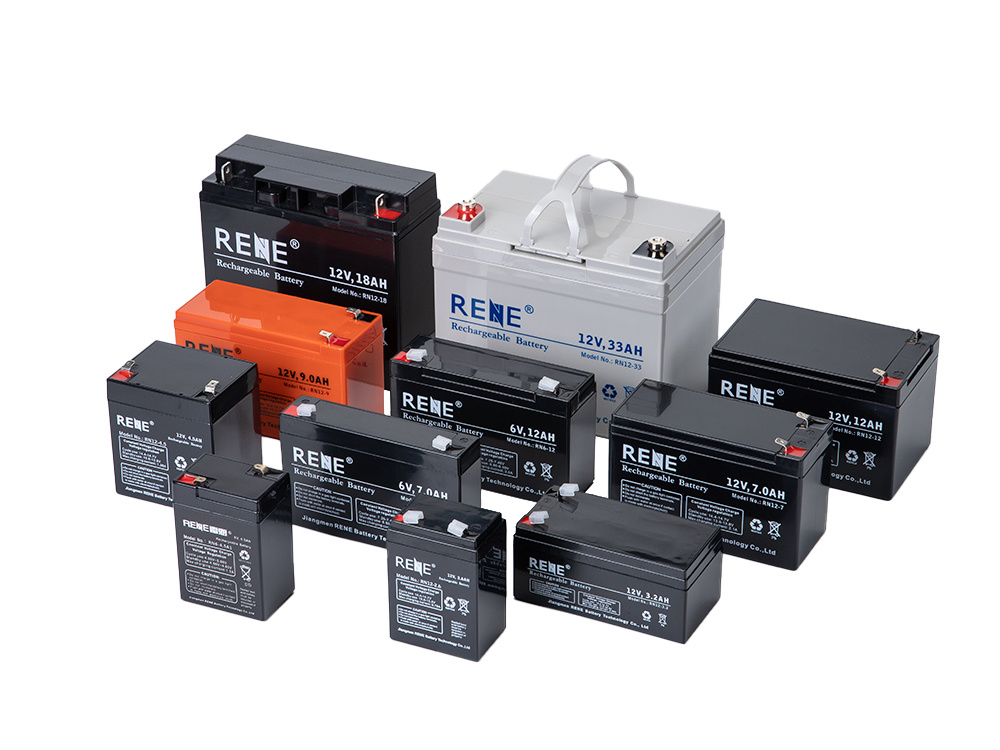Jiangmen Rene Battery Technology Co., Ltd.
Exploring Affordable Off-Grid Solar Battery Banks: A Comprehensive Guide
2025-06-02
In recent years, the demand for renewable energy solutions has surged, with off-grid solar battery banks emerging as a popular choice for both homeowners and businesses seeking energy independence. A cheap off-grid solar battery bank can store the surplus energy generated by solar panels, providing a reliable power source when sunlight is unavailable. This guide aims to provide essential informati

In recent years, the demand for renewable energy solutions has surged, with off-grid solar battery banks emerging as a popular choice for both homeowners and businesses seeking energy independence. A cheap off-grid solar battery bank can store the surplus energy generated by solar panels, providing a reliable power source when sunlight is unavailable. This guide aims to provide essential information about these battery banks, their advantages, and considerations for selecting the right one for your needs.
Firstly, an off-grid solar battery bank is designed to store energy generated by solar panels. This stored energy can be used during night hours or when solar generation is low due to cloudy weather. One of the key benefits of utilizing a cheap off-grid solar battery bank is the ability to reduce reliance on grid electricity. This is particularly advantageous in remote areas where traditional power lines may not be accessible, or for those who wish to reduce their carbon footprint.
When considering a cheap off-grid solar battery bank, it is vital to understand the different types available on the market. The most common types include lead-acid batteries, lithium-ion batteries, and absorbent glass mat (AGM) batteries. Lead-acid batteries are typically the most affordable option, making them a popular choice for budget-conscious consumers. However, they require more maintenance and have a shorter lifespan compared to lithium-ion batteries. Lithium-ion batteries, on the other hand, offer higher energy density, longer life cycles, and require minimal maintenance, making them an attractive, albeit more expensive, option for many users.
In addition to the type of battery, capacity is another critical factor to consider. Battery capacity is measured in amp-hours (Ah) and indicates how much energy the battery can store. When selecting a cheap off-grid solar battery bank, it is essential to consider your energy consumption patterns and determine the appropriate capacity to meet your needs. This ensures that you have enough stored energy to power your household or business during peak usage times.
Moreover, investing in a quality charge controller is crucial for maintaining the health of your off-grid solar battery bank. A charge controller helps regulate the voltage and current coming from your solar panels, preventing overcharging and prolonging the lifespan of your batteries.
Finally, it’s important to consider the overall system design. Integrating your solar panels, batteries, and charge controller effectively will maximize efficiency and performance. Consulting with a professional installer can help you design a system that meets your specific requirements and ensures optimal energy management.
In conclusion, a cheap off-grid solar battery bank can be an excellent investment for those looking to harness the power of solar energy while achieving greater energy independence. By understanding the types, capacity, and system design, you can make informed decisions that align with your energy needs and sustainability goals.
Firstly, an off-grid solar battery bank is designed to store energy generated by solar panels. This stored energy can be used during night hours or when solar generation is low due to cloudy weather. One of the key benefits of utilizing a cheap off-grid solar battery bank is the ability to reduce reliance on grid electricity. This is particularly advantageous in remote areas where traditional power lines may not be accessible, or for those who wish to reduce their carbon footprint.
When considering a cheap off-grid solar battery bank, it is vital to understand the different types available on the market. The most common types include lead-acid batteries, lithium-ion batteries, and absorbent glass mat (AGM) batteries. Lead-acid batteries are typically the most affordable option, making them a popular choice for budget-conscious consumers. However, they require more maintenance and have a shorter lifespan compared to lithium-ion batteries. Lithium-ion batteries, on the other hand, offer higher energy density, longer life cycles, and require minimal maintenance, making them an attractive, albeit more expensive, option for many users.
In addition to the type of battery, capacity is another critical factor to consider. Battery capacity is measured in amp-hours (Ah) and indicates how much energy the battery can store. When selecting a cheap off-grid solar battery bank, it is essential to consider your energy consumption patterns and determine the appropriate capacity to meet your needs. This ensures that you have enough stored energy to power your household or business during peak usage times.
Moreover, investing in a quality charge controller is crucial for maintaining the health of your off-grid solar battery bank. A charge controller helps regulate the voltage and current coming from your solar panels, preventing overcharging and prolonging the lifespan of your batteries.
Finally, it’s important to consider the overall system design. Integrating your solar panels, batteries, and charge controller effectively will maximize efficiency and performance. Consulting with a professional installer can help you design a system that meets your specific requirements and ensures optimal energy management.
In conclusion, a cheap off-grid solar battery bank can be an excellent investment for those looking to harness the power of solar energy while achieving greater energy independence. By understanding the types, capacity, and system design, you can make informed decisions that align with your energy needs and sustainability goals.
Key words:














